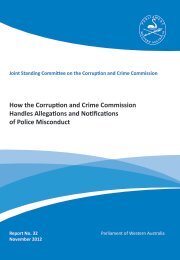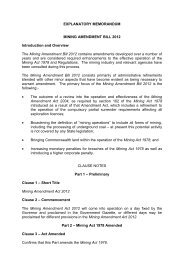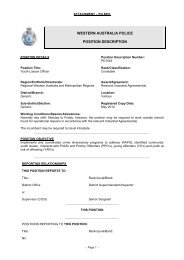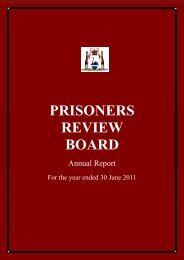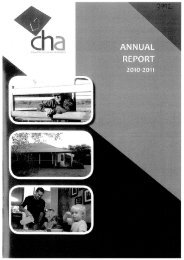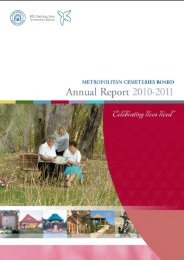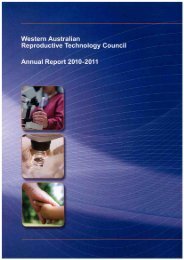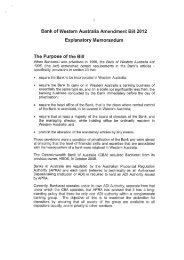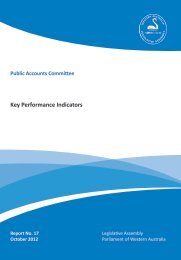Port Hedland Port Authority Annual Report 2011 - Parliament of ...
Port Hedland Port Authority Annual Report 2011 - Parliament of ...
Port Hedland Port Authority Annual Report 2011 - Parliament of ...
You also want an ePaper? Increase the reach of your titles
YUMPU automatically turns print PDFs into web optimized ePapers that Google loves.
The collectability <strong>of</strong> receivables is reviewed on an ongoing basis and any receivables identified as<br />
uncollectible are written-<strong>of</strong>f against the allowance account. The allowance for uncollectible<br />
amounts (doubtful debts) is raised when there is objective evidence that the <strong>Authority</strong> will not be<br />
able to collect its debts.<br />
(d)<br />
Inventories<br />
Inventories consist <strong>of</strong> stores which are measured at the lower <strong>of</strong> cost and net realisable value.<br />
(e)<br />
Property, plant and equipment<br />
Land and buildings (note 13) are shown at cost less subsequent depreciation for buildings. All<br />
other property, plant and equipment are stated at cost less depreciation. Cost includes<br />
expenditure that is directly attributable to the acquisition <strong>of</strong> the items.<br />
Subsequent costs are included in the asset’s carrying amount or recognised as a separate asset, as<br />
appropriate, only when it is probable that future economic benefits associated with the item will<br />
flow to the <strong>Authority</strong> and the cost <strong>of</strong> the item can be measured reliably. All other repairs and<br />
maintenance are charged to the statement <strong>of</strong> comprehensive income during the financial period<br />
in which they are incurred.<br />
Land is not depreciated. Depreciation on other assets is calculated using the straight line method<br />
to allocate their cost or revalued amounts, net <strong>of</strong> their residual values, over their estimated<br />
useful lives, as follows:<br />
Buildings and <strong>Port</strong> Improvements 25 - 40 years Straight line<br />
Capital Dredging 40 years Straight line<br />
Navigational Aids 2 - 30 years Straight line<br />
Wharves and Utilities 10 – 40 years Straight line<br />
Office Furniture, Fittings and Equipment 3 – 20 years Straight line<br />
(f)<br />
Impairment<br />
Other assets are reviewed for impairment whenever events or changes in circumstances indicate<br />
that the carrying amount may not be recoverable. An impairment loss is recognised for the<br />
amount by which the asset’s carrying amount exceeds its recoverable amount. The recoverable<br />
amount is the higher <strong>of</strong> an asset’s fair value less costs to sell and value in use. For the purposes <strong>of</strong><br />
assessing impairment, assets are grouped at the lowest levels for which there are separately<br />
identifiable cash inflows which are largely independent <strong>of</strong> the cash inflows from other assets or<br />
groups <strong>of</strong> assets (cash generating units). Non-financial assets other than goodwill that suffered<br />
impairment are reviewed for possible reversal <strong>of</strong> the impairment at each reporting date.<br />
(g)<br />
Leases<br />
Leases in terms <strong>of</strong> which the <strong>Authority</strong> assumes substantially all the risks and rewards <strong>of</strong><br />
ownership are classified as finance leases. Upon initial recognition the leased asset is measured at<br />
an amount equal to the lower <strong>of</strong> its fair value and the present value <strong>of</strong> the minimum lease<br />
payments. Subsequent to initial recognition, the asset is accounted for in accordance with the<br />
accounting policy applicable to that asset.<br />
Page 59



